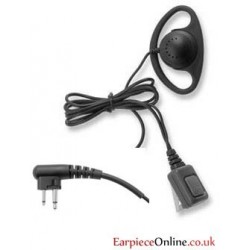Music is a big part of daily life and it has been for almost as long as Human beings have now been on this earth. I often point to a discovery of a 40,000-year-old flute dating back to that ice age as evidence for this, but truly, all the facts you will need is all around you, every day. We remember ballads and songs long after the people who initially composed them have died and rotted away (a plan which I find curiously soothing) plus the music industry, love it or hate it, is always a large business.
Though, whilst the ice age musicians likely survived during a world of stark violence, frozen, dull wastelands and harsh, ‘kill or be killed’ inter-cave politics, they by no means required to cope with road works, transport lorries, screaming babies or drunken crowd-rousers on their way to a stag evening. Lucky buggers.
Today’s listener has to accommodate all that and much more, that may make listening to your music not just difficult, but additionally risky.
Now, though, contemporary science has stumbled across a way in which you’ll be able to still listen to the favourite songs, even if you’re wearing earplugs (no, I have not been sniffing discarded paint cans yet again). It is called bone conduction technology and no, despite the marginally odd name, it really doesn’t hurt…
Based on recent research, exposure to any noise over 100 decibels wears away a membrane known as the myelin sheath and leaves your inner ear susceptible to problems like tinnitus and temporary deafness, which can be the beginning of even more important problems. Bone conduction technology is designed to bypass many sensitive parts of the ear and reduce the risk of inner-ear damage.
How? Well, so as to know that, we need to first understand how our ears actually work. (HERE COMES THE SCIENCE-Y BIT) Principally, noise travels though the air, these sound waves are intercepted by numerous structures in the ear and are finally translated and transmitted into our brains (if it helps, visualize it like the encoding/decoding of digital information, like that which leads the movements of the wireless mouse).
The sound waves first meet a bit of cartilage (yes, the same stuff that a shark’s skeleton is made of), which helps to concentrate the sound, this known as a pinna (but you’ll call it your outer ear without looking too silly).
After that, the sound waves pass into your central ear, it is filled with air and also includes both your acoustic canal plus your eardrum (my little brother burst his when he was little and virtually burst mine crying about it). The eardrum vibrates, passing the sound through to a ossicles, which are three small bones (that are actually pretty necessary to the sense of balance, I’m told). These tiny bones transmit the signal to the cochlea, that is a fluid-filled structure that ‘encodes’ the signals for our noggin to ‘decode’.
Bone conduction tech vibrates the bones of your skull, distributing the sound directly to a cochlea and bypassing the rest of the ear entirely. The nerve impulses transmitted to your mind are exactly the same, however the sensitive instrument of the ear does not need to deal with the hassle of, to quote Anchorman’s Brick Tamland “LOUD NOISES!”
This process seems to be completely safe; in fact, the legendary deaf composer Beethoven applied a rudimentary version of this process to be able to compose his most well-known works. He attached a rod between his piano and his head and, as such, was able to hear the music he was playing.
So here you go, rather than exposing your delicate ears to louder and louder volumes, to drown out the environment noise, it is possible to alternativily stick your earpugs in and play your music at the correct volume. Make no bones about it (groan!)
for more information on the full range of
bone conductor earpieces visit www.earpieceonline.co.uk
